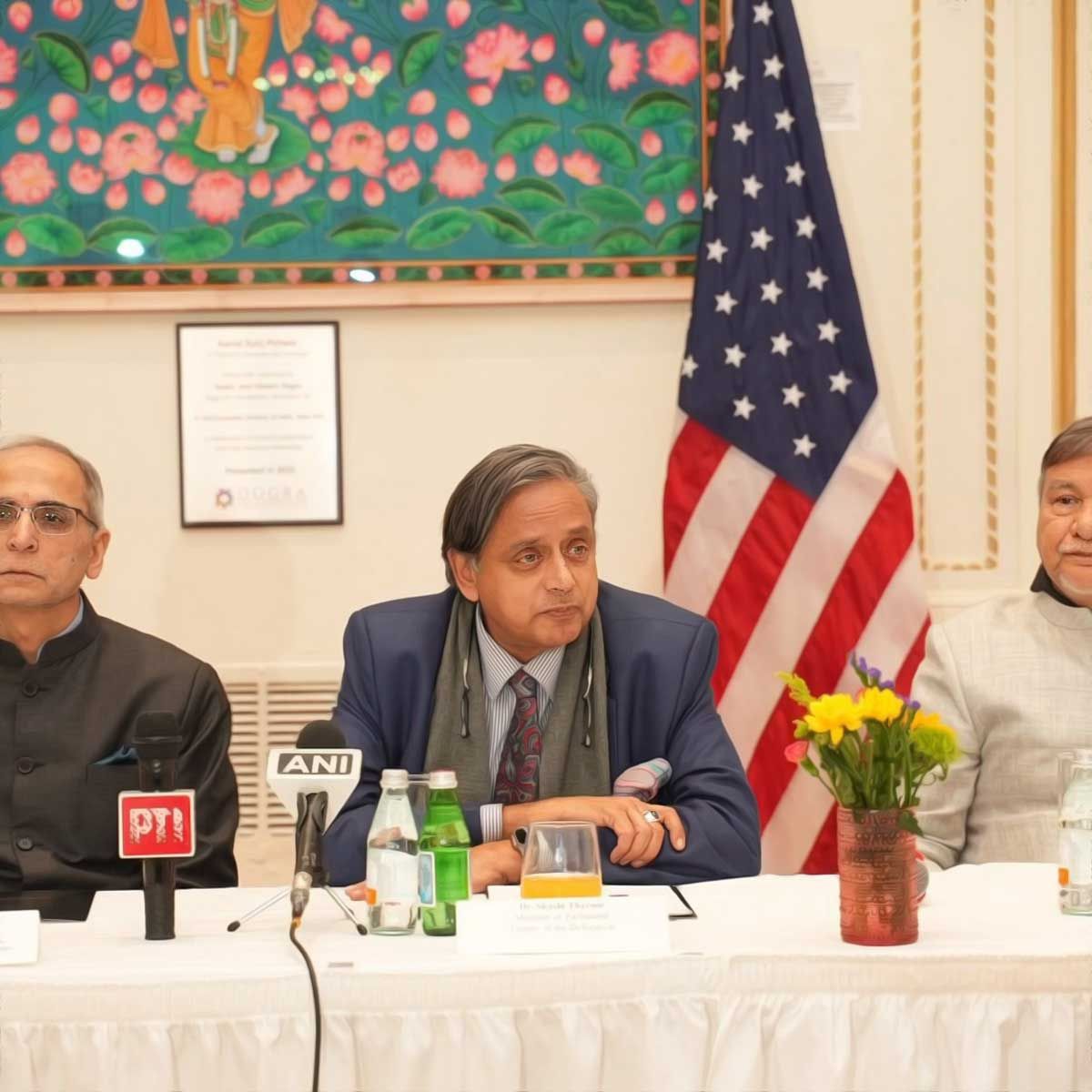More Coverage
Twitter Coverage
Satyaagrah
Written on
Satyaagrah
Written on
Satyaagrah
Written on
Satyaagrah
Written on
Satyaagrah
Written on
JOIN SATYAAGRAH SOCIAL MEDIA
After the death of Narasimha Rao, Congress President Sonia Gandhi did not let his body enter Congress HQ & last rites happen in Delhi, they did not even have the decency to arrange enough firewood for his funeral, his body lay half burnt with intact skull
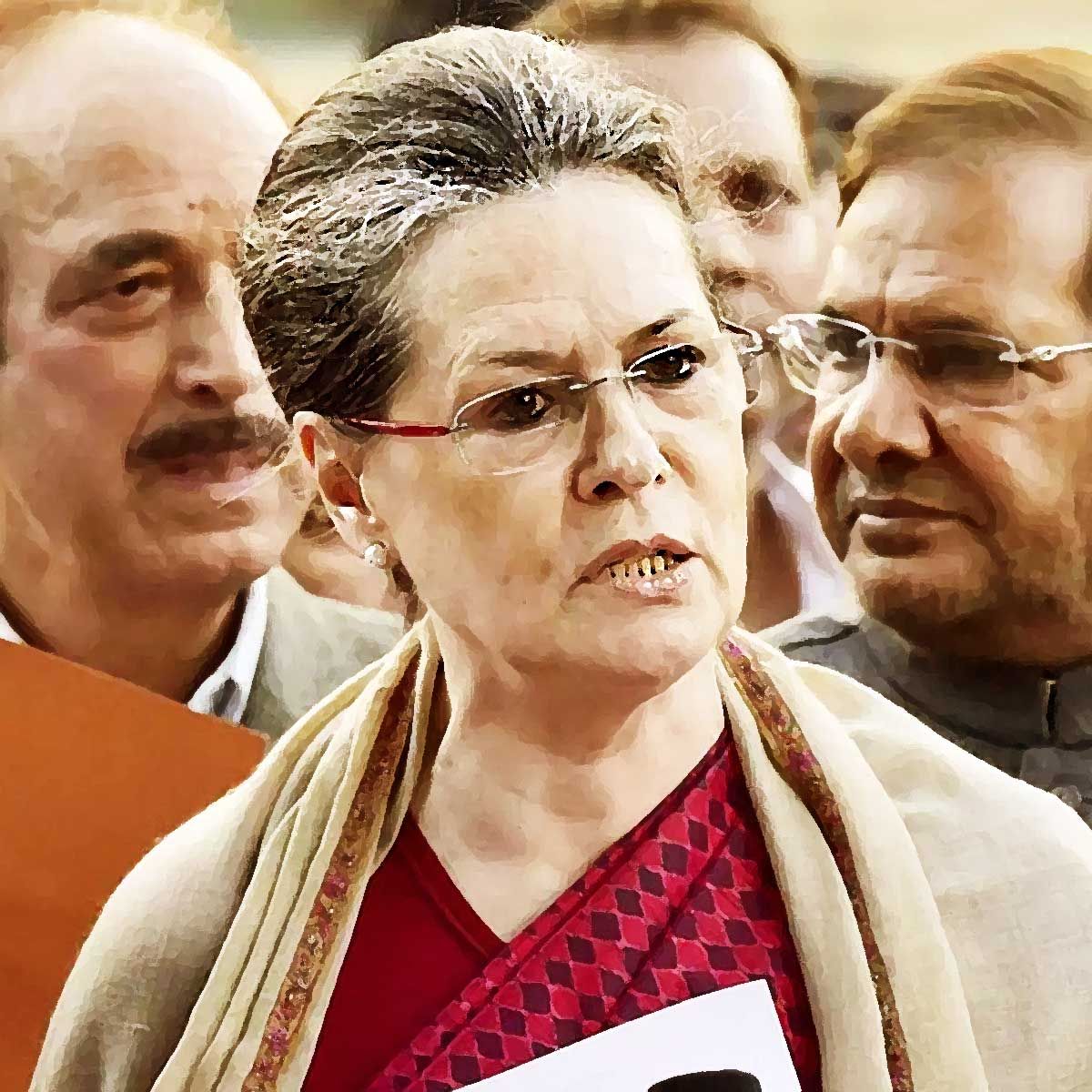
The corpse was clad in white dhoti and golden silk kurta.1 At 2.30 p.m., it was brought from Delhi’s All India Institute of Medical Sciences to 9 Motilal Nehru Marg. PV Narasimha Rao, prime minister of India from 1991 to 1996, had died at around 11 a.m., 23 December 2004. The doctors had needed a couple of hours to dress the body before sending it back home.
One of the first people to arrive at Rao’s house was Chandraswami, the bearded guru who had known him since 1971.2 Also present were his eight sons and daughters—whom he had kept at a distance—as well as the nephews and grandchildren he had been closer to. Eldest son, Ranga Rao— who had fought bitterly with his father—was inconsolable.
Then began the politics.
The home minister, Shivraj Patil, suggested to Rao’s youngest son, Prabhakara, that ‘the body should be cremated in Hyderabad’. But the family preferred Delhi. After all, Rao had last been chief minister of Andhra Pradesh more than thirty years ago, and had since worked as Congress general secretary, Union minister, and finally prime minister—all in Delhi. On hearing this, the usually decorous Shivraj Patil snapped, ‘No one will come.’3
Kashmiri Congressman Ghulam Nabi Azad, another aide of party president Sonia Gandhi, arrived. He too requested the family to move the body to Hyderabad. An hour later, Prabhakara received a call on his mobile phone. It was YS Rajasekhara Reddy, the Congress chief minister of Andhra Pradesh and no friend of Narasimha Rao’s. ‘I just heard about it,’ Reddy said, ‘I am near Anantapur, and I’ll be in Delhi by this evening. Take it from me. We will give him a grand funeral [in Hyderabad].’
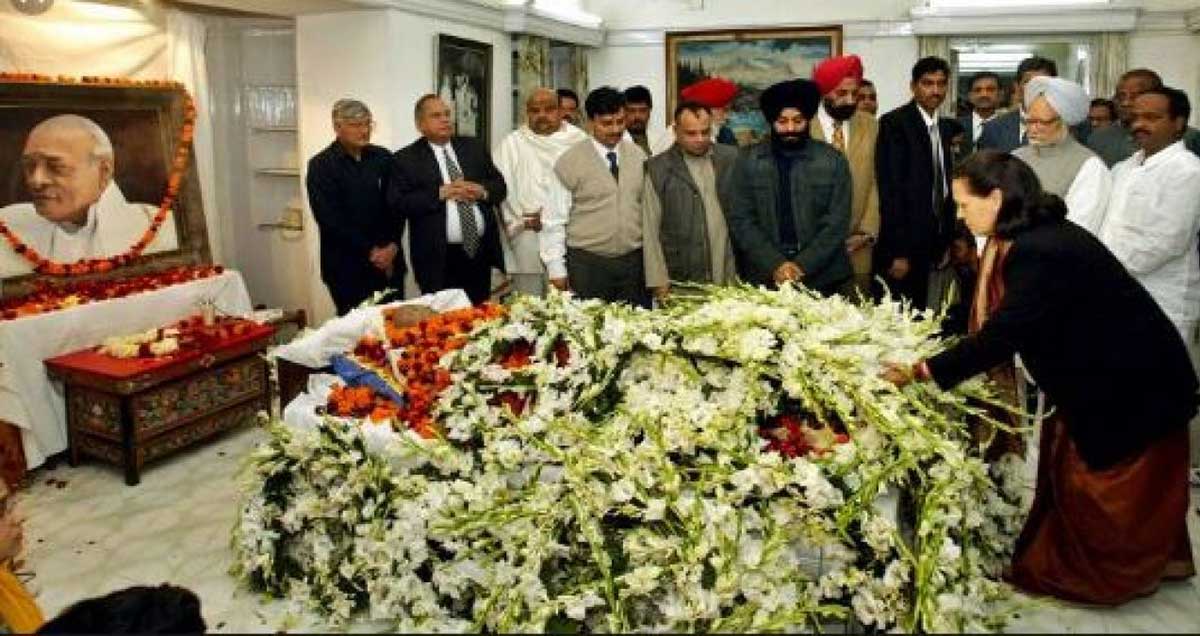 |
At 6.30 pm, Sonia Gandhi entered the house in Motilal Nehru Marg, named after her great-grandfather-in-law. Prime minister Manmohan Singh followed, along with Pranab Mukherjee. They walked through the long corridor to the room at the end where Rao’s body, now decked in flowers, was displayed. ‘What do you want to do with the body?’ the prime minister asked Prabhakara. ‘These people say it should be in Hyderabad.’ ‘This [Delhi] is his karmabhoomi,’ Prabhakara replied, ‘you should convince your Cabinet colleagues.’ Manmohan nodded. Sonia Gandhi was standing nearby.
She said little.
The journalist Sanjaya Baru arrived. His bureaucrat father knew Rao from the 1960s. As Baru entered the corridor, Sonia’s political secretary tapped him on the shoulder. ‘You know the family,’ Ahmed Patel said. ‘The body should be taken to Hyderabad. Can you convince them?’ Baru continued walking towards the end of the corridor, when he heard someone cry. He turned left to see Kalyani Shankar sobbing in a side room.4 Kalyani had been Rao’s most trusted friend for the last two decades.
YS Rajasekhara Reddy had by now reached Delhi. ‘It is our government, trust me,’ he told Rao’s family. ‘Let him be moved to Hyderabad. We will build a grand memorial for him there.’ Rao’s daughter S Vani Devi says, ‘YSR was playing a major role in convincing [the] family to get the dead body to Hyderabad.’5
The family wanted a commitment that a memorial would be built for Rao in Delhi. The Congress leaders present said yes. But considering how the party had treated Rao in his retirement, the family wanted to make doubly sure. At 9.30 pm, they paid a visit to the one man who had stood by Narasimha Rao in the last years of his life. Manmohan Singh was wearing his nightdress, a white kurta-pyjama, when Rao’s family met him at his official residence on Race Course Road. When Shivraj Patil explained the demand for a memorial in Delhi, Manmohan replied, ‘No problem, we will do it.’6
Prabhakara recalls, ‘We sensed even then that Sonia-ji did not want Father’s funeral in Delhi. She did not want a memorial [in Delhi] . . . She did not want him [to be seen] as an all-India leader . . . [But] there was pressure.’
‘We agreed.’
The next day, 24 December 2004, leaders from across the political spectrum—from communists to BJP leaders—all came to pay their respects.7 At 10 a.m., the body was draped in the national flag, put on a flower-decked carriage pulled by an army vehicle, and escorted by military personnel8 in a slow procession towards the airport. Along the way, they planned to stop at 24 Akbar Road, the Congress party headquarters. Ever since Narasimha Rao had first moved into 9, Motilal Nehru Marg in 1980, he had made this journey countless times.
As the body approached 24 Akbar Road, located adjacent to Sonia Gandhi’s residence, the funeral procession slowed. The entrance gate to the compound looked firmly shut. There were several senior Congressmen present, but hardly any cadres had been rustled up.9 No slogans filled the air, just deathly silence. The carriage stopped on the pavement outside, as Sonia Gandhi and others came out to pay their respects.
It was customary for the bodies of past Congress presidents to be taken inside the party headquarters so that ordinary workers could pay their respects. The family was somewhat dazed when this did not happen. A friend of Rao’s asked a senior Congresswoman to let the body in. ‘The gate does not open,’ she replied. ‘This was untrue,’ the friend remembers. ‘When Madhavrao Scindia died [some years earlier] the gate was opened for him.’ Manmohan Singh now lives in a guarded bungalow a few minutes from Akbar Road. When asked why Rao’s body wasn’t allowed into the Congress headquarters, he replies that he was present, but has no knowledge of this.10 Another Congressman is more forthcoming. ‘We were expecting the gate to be opened . . . but no order came. Only one person could give that order.’
He adds, ‘She did not give it.’
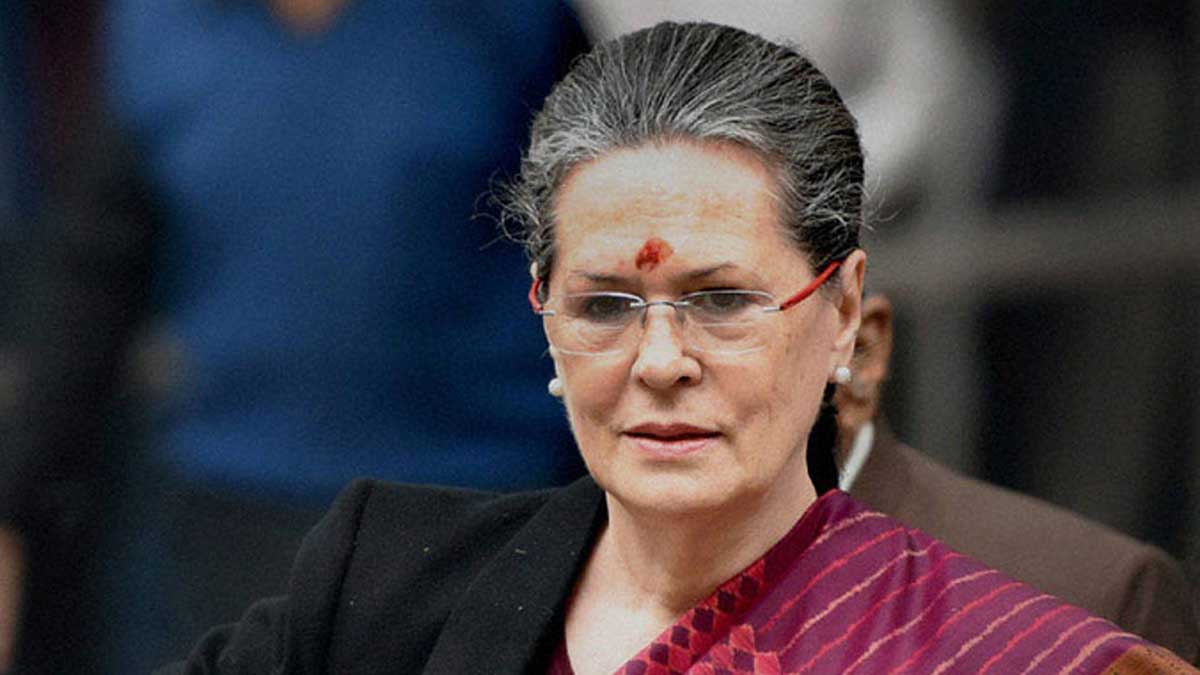 |
After thirty awkward minutes,11 the cortège moved on to the airport, where the body was placed on an AN-32 plane of the Indian Air Force. The plane reached Hyderabad airport at 4.55 pm.12 The entire state Cabinet and bureaucracy, led by the chief minister and the governor, was present to receive the body. The coffin, draped in the national colours of orange, white and green was carefully lowered from the plane, with a guard of honour provided by soldiers of the Gorkha regiment of the Indian Army. The soldiers wanted to place the coffin on a gun carriage, but it would not fit. They improvised, placing rubber sheets under the coffin, and using a nylon rope the soldiers fastened it to the gun carriage.13 Narasimha Rao, experimenter of objects and ideas, would have approved.
Body secured, the carriage made its way through the streets of Hyderabad, mourners on either side, till it reached Jubilee Hall in the centre of the city. Here the body lay in state for an entire day, as thousands streamed past to pay their respects.14
Meanwhile, the Andhra chief minister stuck to his word, and oversaw preparations for the funeral on a four-acre site by the banks of Hussain Sagar lake.15 The funeral took place at 1 pm the next day. Prime minister Manmohan Singh made it a point to attend. K. Natwar Singh, then a senior Congressman, remembers, ‘Manmohan was not happy with the treatment of the body [in Delhi].’16
Apart from the prime minister, most of his Cabinet as well as former prime minister HD Deve Gowda were present. As was the BJP’s L.K. Advani—the man who chose not to become prime minister in 1996, in part after Rao had ordered hawala corruption charges filed against him.17 Also paying their respects were 12,000 ordinary citizens of India, many of whom had come all the way from Rao’s ancestral village of Vangara.
Congress President Sonia Gandhi chose not to be present.
As Ranga Rao lit the pyre, he broke down and was comforted by his younger brothers.18 When the dignitaries left a couple of hours later, the body was still burning. That night, television channels showed visuals of the half-burnt body, skull still visible, lying abandoned.19 Stray dogs were pulling at the funeral pyre.
In the twelve years since his death, P.V. Narasimha Rao continues to be ignored by his party. The Congress was in power in both the Centre and in the state of Andhra Pradesh from 2004 to 2014. No memorial was built for him during this period. The government did not officially celebrate his birthday every year.21 This was instead done privately by Rao’s family in Delhi. They were helped by Rao’s personal staff, friends and MS Bitta, the Punjab Congressman sidelined for his proximity to Rao.
The one Congressman who would punctually attend these birthday celebrations was prime minister Manmohan Singh. When asked why he chose to defy an unwritten code of his party, Manmohan replies that Rao gave him full freedom on economic reform. Going for a memorial service one day in a year was a small price to pay. ‘I wanted to respect his memory.’23
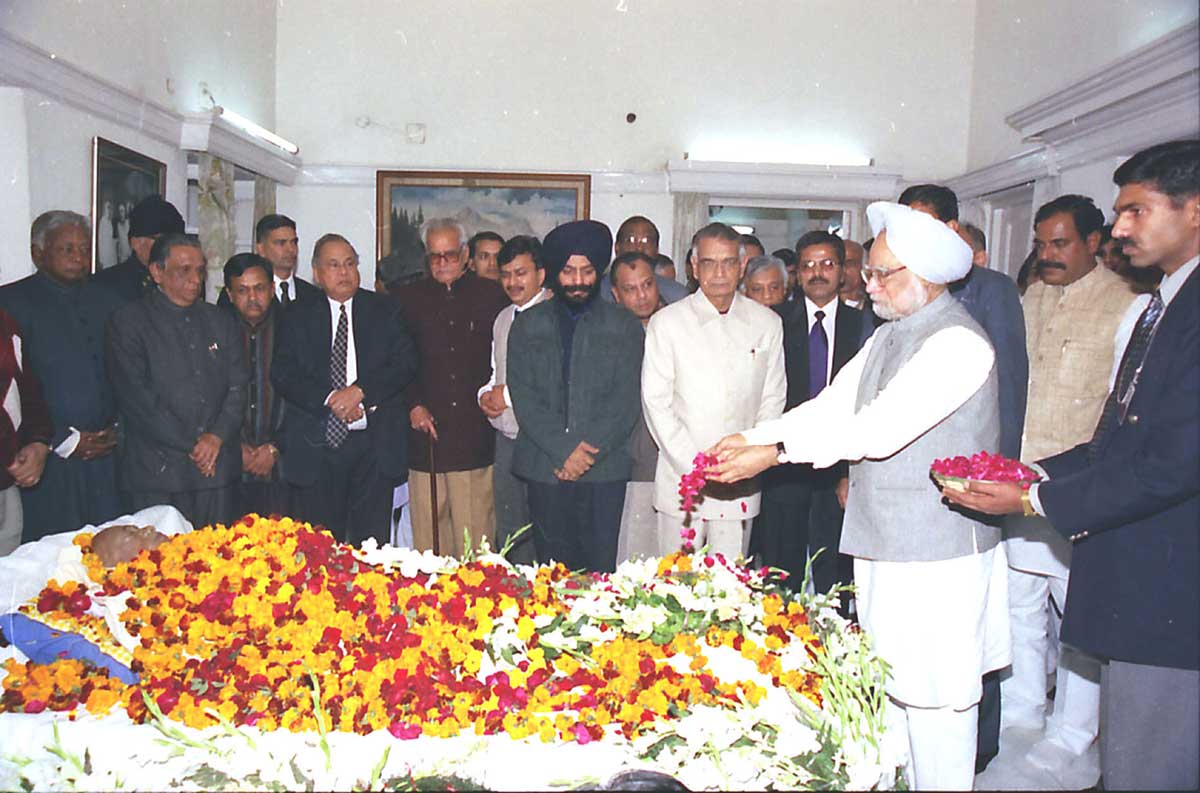 |
Captain Lakshmikantha, a relative of Rao, is a politician from the regional party Telangana Rashtra Samithi (TRS). When his party was in a coalition with the Congress in Andhra Pradesh in 2012, he remembers petitioning for a statute of Rao to be erected in Warangal. ‘The local Congress people blocked the plan,’ Lakshmikantha says. ‘If the statue is built, then they have to go garland [it]. If someone takes a photo and Sonia madam sees it . . . they did not want that.’24
There was one basic reason for Sonia Gandhi’s dislike of Narasimha Rao. As K Natwar Singh puts it, ‘Rao realized that he didn’t have to report to Sonia as prime minister. He didn’t. She resented that.’25 An aristocrat from the princely state of Bharatpur, Natwar was married to the daughter of the maharaja of Patiala. He had spent much of his life as a diplomat, before joining the Congress party, rebelling against prime minister Narasimha Rao, and then becoming Sonia Gandhi’s closest aide. Natwar would end his career like Rao, abandoned by Sonia, cast out by his own party.
The subtle sidelining of Rao has been accompanied by more blatant attempts to tar his legacy. On economic liberalization, the Congress narrative seeks to credit Rajiv Gandhi for the ideas, and Manmohan Singh for the execution. As Sonia Gandhi said during the 125th anniversary celebrations of the Congress party, ‘Rajiv-ji did not stay with us to see his dreams being realized, but we can see reflections of his thoughts in the party manifesto for the 1991 elections. That became the basis for economic policies for the next five years.’26
The other criticism of Rao has been on his role in the fall of Babri Masjid in December 1992. Congress leader Jairam Ramesh—otherwise an admirer of Narasimha Rao—says that ‘99.99 per cent of the Congress party believes that Rao connived in the destruction of the Babri Masjid. And that clouds the judgment of every Congressman.’27 Rahul Gandhi publicly claimed that had his family been in power in 1992, the Babri Masjid would not have fallen.28 Since the Congress was anxious to denounce its own for the demolition, other parties felt no need to contest the claim.
This absence of a political constituency meant that Rao was also blamed for other sins—from letting Union Carbide chairman Warren Anderson go free after the Bhopal gas leak,29 to allowing Sikhs to be killed in Delhi in 1984.30 As Congress leader Salman Khurshid says, ‘[Rao] is a tragic figure, remembered for so much that went wrong, but not for so much that went right.’31
The Congress assault on Rao’s record has been supplemented by left-wing parties and intellectuals. They blame Rao for ‘pro-rich policies’, which, in the words of veteran communist Somnath Chatterjee, ‘had brought untold miseries to the people’.32 It is essential to this intellectual project that Rao also be blamed for Babri Masjid. For, communalism and capitalism, Marxists believe, are two sides of the same coin.
With no group willing to stand up for him, these criticisms have contributed to Rao’s public disgrace.
That has been changing in the past few years, with newly converted devotees—as hagiographic as his detractors are blistering—attempting to resurrect his legacy.
 |
This nascent political revival is anchored in ideological waters. As a ‘right-wing’ intellectual discourse takes shape in India—loudly on Twitter and television, more subtly in think tanks and some universities—Rao is being sculpted as the hero who freed India’s economy and ended Nehruvian socialism.
That Rao’s five years in office transformed India is hard to dispute. When Rao became prime minister in 1991, the economy was folding up. By 1996, India was growing at 7.5 per cent. Narasimha Rao inherited a ‘welfare state’ that was inefficient and underfunded. Many of the large social schemes that India has now undertaken—from employment guarantees to food security—were first initiated during his reign. Rao came to power when India’s main global partner, the Soviet Union, was in slow collapse. By the time he left, India had improved relations with the US, Israel, China as well as East Asia.
The India of 1991 was fraying at the edges. The Liberation Tigers of Tamil Eelam (LTTE) had just killed Rao’s Congress predecessor. Elections had to be postponed in Kashmir and Punjab, because the Indian government could not guarantee peace in either state. And insurrection in the North-east showed no signs of easing. By the time Rao left office, Punjab and Assam had been pacified, and the worst of the violence in Kashmir was over. Narasimha Rao also transformed the very idea of the Congress. A party that had grown used to anchoring itself around a single family was—even if briefly—prospering without them.
The reforms Narasimha Rao unleashed have also transformed India in the everyday. In 1991, the middle-class numbered no more than 30 million,37 compared to 300 million in 2013.38 There were only 2.3 million kilometres of roads in 1991, compared to double that in 2012.39 Flying was expensive, with only one option, the state-owned Indian Airlines. A mere ten million passengers travelled by air in 199140—compared to 82 million in 2014.41 Train travel was cheaper but meant waiting in queue for months, with no certainty of a confirmed berth. The one accomplishment was telephone connectivity, a result of prime minister Rajiv Gandhi’s target of a telephone booth in every village. But so low was the bar for ‘accomplishment’ in the India of 1991 that the number of subscribers was only five million.42 Compare that to 2015, where India has nearly a billion phone subscriptions.43
The India before Rao was also a place without broadcast entertainment. Entire neighbourhoods would huddle around a single television to watch serials of the Hindu epics, the Ramayana and the Mahabharata. These would be carried on the nation’s only television channel, Doordarshan, thanks to a state monopoly over broadcasting. Compare that to 2015, where viewers can choose from 832 channels.44
In terms of the quantum of transformation brought about, Rao ranks with other twentieth-century revolutionary figures such as Jawaharlal Nehru of India, Deng Xiaoping of China, Franklin D. Roosevelt and Ronald Reagan of the United States, Margaret Thatcher of Great Britain, and Charles de Gaulle of France.
But these leaders had advantages that Rao did not.
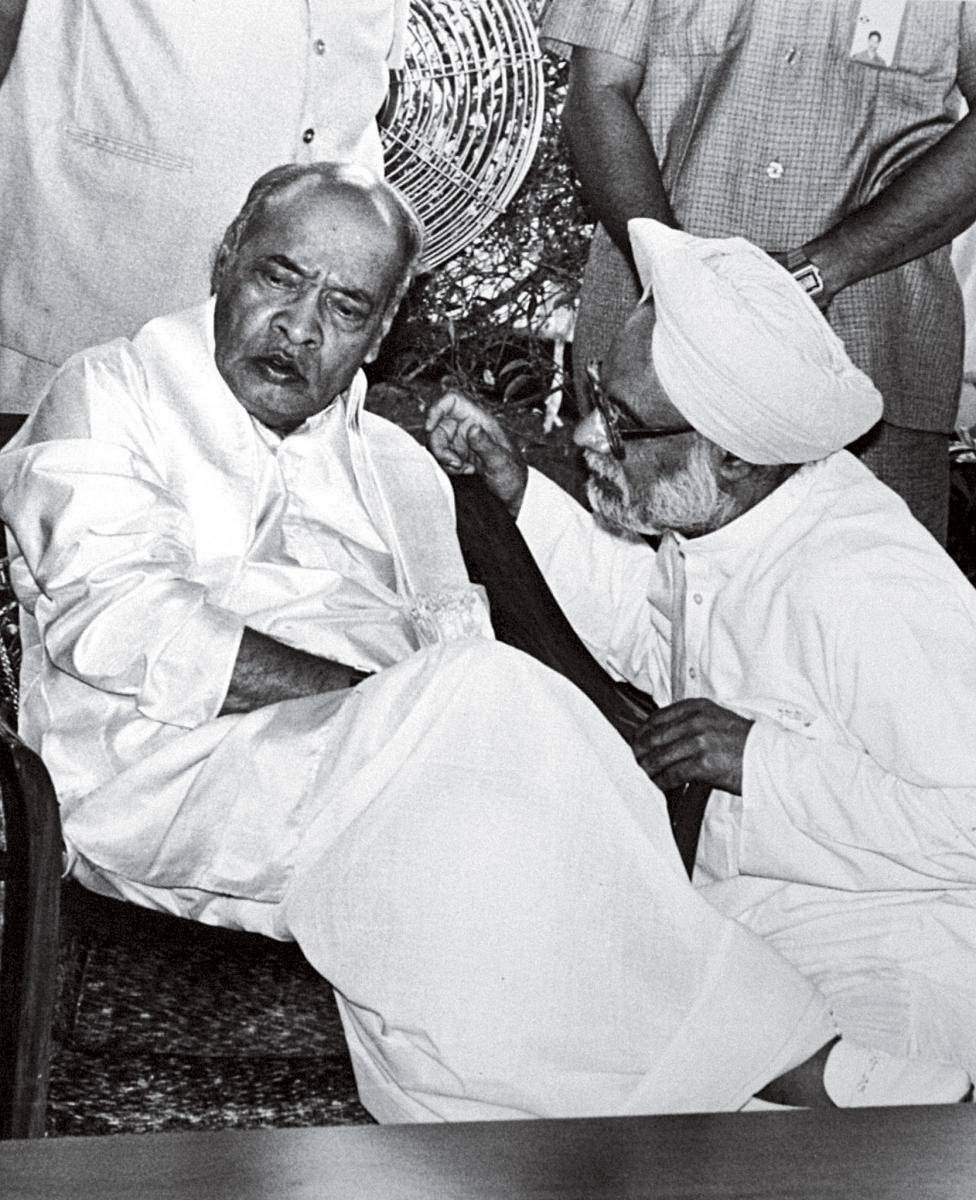 |
Unlike Deng, Narasimha Rao operated in a fractious democracy with several limits on his powers. Unlike FDR and de Gaulle, Rao lacked charisma and popular support. And in contrast to Reagan, Thatcher and Nehru, Rao did not control Parliament or even his own party. Scarcely a week went by when he was not challenged by dissidents within the Congress. And Rao’s government survived multiple ordeals in Parliament to become the first minority dispensation in Indian history to last a full term. That he survived is itself noteworthy. That he did much more than survive is nothing short of a miracle.
A few other Indian leaders have ushered change while working under constraints. Despite being the first non-Nehru-Gandhi prime minister, Lal Bahadur Shastri won a war, encouraged some private enterprise, and launched the Green Revolution.45 But he was respected within the Congress and enjoyed a dominant majority in Parliament, while Rao had none of these luxuries.
References:
- Interview with P.V. Prabhakara Rao in Hyderabad, 2015
- Interview with Chandraswami in Delhi, 2015
- Interviews with P.V. Rajeshwara Rao and P.V. Prabhakara Rao in Hyderabad, 2015
- Interview with Sanjaya Baru in New Delhi, 2015
- Interview with S. Vani Devi in Hyderabad, 2015
- Interview with P.V. Prabhakara Rao in Hyderabad, 2015
- ‘Leaders pay last respects to Rao’, The Hindu, 25 December 2004, thehindu.com
- Ibid
- 'Rao fails to get resting place in Delhi’, the Times of India, 25 December 2004, 1
- Interview with Manmohan Singh in New Delhi, 2015
- ‘Rao fails to get resting place in Delhi’, the Times of India, 25 December 2004, 1
- ‘Cortege carrying PV’s body arrives’, The Hindu, 25 December 2004, thehindu.com
- Ibid
- ‘Homage paid to Rao’, The Hindu, 25 December 2004, 1, thehindu.com
- ‘Manmohan to lead mourners at Narasimha Rao’s funeral’, The Hindu, 25 December 2004, thehindu.com
- Interview with K. Natwar Singh in New Delhi, 2016
- ‘Nation bids adieu to Narasimha Rao’, The Hindu, 26 December 2004, 1, thehindu.com
- Ibid
- ‘Family revives Rao’s funeral pyre’, the Tribune, 26 December 2004, tribuneindia.com
- Interview with P.V.R.K. Prasad in Hyderabad, 2015
- Interview with P.V. Prabhakara Rao in Hyderabad, 2015
- Interview with Sanjaya Baru in New Delhi, 2015
- Interview with Manmohan Singh in New Delhi, 2015
- Interview with Captain V. Lakshmikantha Rao in Warangal (now in Telangana state), 2015
- Interview with K. Natwar Singh in New Delhi, 2016
- Ramachandra Guha, ‘The Great Unmentionable’, the Telegraph, Kolkata, 27 March 2010, telegraphindia.com
- Interview with Jairam Ramesh in New Delhi, 2015
- ‘Babri wouldn’t have fallen if a Gandhi was PM: Rahul’, the Times of India, 20 March 2007, timesofindia.indiatimes.com
- Arjun Singh (with Ashok Chopra), A Grain of Sand in the Hourglass of Time: An Autobiography (New Delhi: Hay House India, 2012), 179
- Zoya Hasan, Congress after Indira: Policy, Power, Political Change (1984–2009), (New Delhi: OUP India, 2012), 2
- Interview with Salman Khurshid in New Delhi, 2015
- Somnath Chatterjee, Keeping the Faith: Memoirs of a Parliamentarian (New Delhi: HarperCollins, 2010), 111
- ‘Former Prime Minister PV Narasimha Rao’s Life History to Be Taught in Telangana Schools’, NDTV, 28 June 2015, ndtv.com
- ‘KCR bats for Bharat Ratna to P V Narasimha Rao on his 93rd birth anniversary; Naidu calls ex- PM a “legend”’, the Indian Express, 28 June 2014, indianexpress.com
- Interview with Arun Jaitley in New Delhi, 2015.
- ‘Award Bharat Ratna to Rao: Swamy’, The Hindu, 24 December 2004, thehindu.com
- Radhika Saraf, ‘The myth of the great Indian Middle class: Roughly 30 per cent of India’s population still lives below the poverty line’, Daily Mail, 19 May 2013, dailymail.co.uk
- This is only one estimate, by the Asian Development Bank. But many other estimates place it at least over 120 million. See Sambuddha Mitra Mustafi, ‘India’s Middle Class: Growth Engine or Loose Wheel?’, the New York Times, 13 May 2013, india.blogs.nytimes.com
- ‘From 1947 to 2014: How the Indian economy has changed since independence’, Firstpost, 15 August 2004, firstpost.com
- World Bank data, available at data.worldbank.org.
- Ibid
- Data from Department of Telecommunications and Telecommunications Regulatory Authority of India. Sunil Mani, ‘India’s Telecommunications Industry’, available at nistads.res.in.
- ‘India Has 100.69 Crore Total Telephone Subscribers’, NDTV, 1 September 2015, ndtv.com.
- See telecomtalk.info.
- Email exchange with Ramachandra Guha, 2016.
- Interview with P.V. Rajeshwara Rao in Hyderabad, 2015
- Excerpt from “Half-Lion: How P.V. Narasimha Rao Transformed India” by Vijay Sitapati, VIking, 362 pages
 Support Us
Support Us
Satyagraha was born from the heart of our land, with an undying aim to unveil the true essence of Bharat. It seeks to illuminate the hidden tales of our valiant freedom fighters and the rich chronicles that haven't yet sung their complete melody in the mainstream.
While platforms like NDTV and 'The Wire' effortlessly garner funds under the banner of safeguarding democracy, we at Satyagraha walk a different path. Our strength and resonance come from you. In this journey to weave a stronger Bharat, every little contribution amplifies our voice. Let's come together, contribute as you can, and champion the true spirit of our nation.
 |  |  |
| ICICI Bank of Satyaagrah | Razorpay Bank of Satyaagrah | PayPal Bank of Satyaagrah - For International Payments |
If all above doesn't work, then try the LINK below:
Please share the article on other platforms
DISCLAIMER: The author is solely responsible for the views expressed in this article. The author carries the responsibility for citing and/or licensing of images utilized within the text. The website also frequently uses non-commercial images for representational purposes only in line with the article. We are not responsible for the authenticity of such images. If some images have a copyright issue, we request the person/entity to contact us at satyaagrahindia@gmail.com and we will take the necessary actions to resolve the issue.
Related Articles
- Father of the Nation! Absolutely not. Mohandas Karamchand Gandhi was not the father of the nation either officially or otherwise
- Wikileaks and 5 lesser know facts of Indira Gandhi: Nuclear technology, corruption and foreign relations
- Was Indira Gandhi a Soviet Agent - 100 Years of Russian Revolution
- Indira Gandhi’s bahu published intimate photos of Jagjivan Ram’s son in her magazine: This 'Saas-Bahu ki Saajish' mothered India’s first major political sex scandal which cost Jagjivan his political career
- Mysterious death of Pandit Deen Dayal Upadhyaya, whose growing popularity was a threat to Congress
- How Communists betrayed India - 100 Years of Russian Revolution
- Netaji, an Impossible man can never be boxed into an ideological corner: Not just the most enigmatic figure in world history but his life is also a tough lesson in how to think about history
- Anuj Dhar claims that Subhas Chandra Bose was suspected of being ‘poisoned’ after ouster from the post of Congress president
- If only India’s partition chilling wound was not enough, Gandhi did his last protest again only to blackmail India into giving 55 crores to Pakistan, dragged Hindu, Sikh refugees seeking shelter in mosques to die in cold: And we call him Mahatma, not for
- Kartar Singh Sarabha - The Freedom fighter who was Hanged at the age of 19 and inspired Bhagat Singh
- How Nehru's Govt helped China in conquering Tibet and let go of it's centuries old friend
- A Tale to revisit: Robert Vadra disowned his family publicly and then followed mysterious deaths
- Was Italian family of Sonia Gandhi involved in the Bofors scam: Papers long buried, questions that were never asked
- On 16th Aug 1946, during Ramzan's 18th day, Direct Action Day aimed to provoke Muslims by mirroring Prophet Muhammad's victory at Badr, Gopal 'Patha', the Lion of Bengal, heroically saved Bengali Hindus & Calcutta from a planned genocide, altering history
- Natwar Singh, an ex-foreign minister, and the Congress Party through a series of illegal oil transactions under Saddam Hussein’s regime’s oil-for-food program were involved in the Iraqi oil scam: Detail in the Volcker Committee Report

























